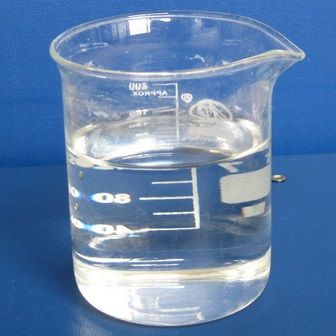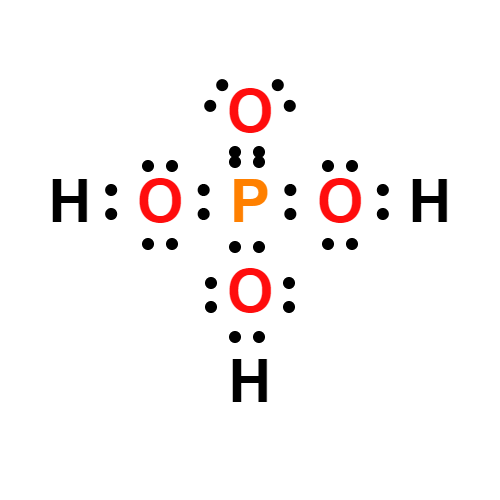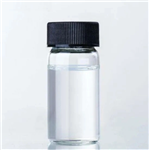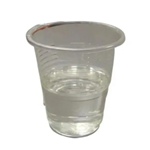Description
Phosphoric acid was prepared first by Robert Boyle in 1694 by dissolving phosphorus pentoxide in water. Phosphoric acid is probably the most important compound of phosphorus. It is the second largest inorganic chemical by volume, after sulfuric acid, marketed in the United States.
The single most important application of Phosphoric acid is manufacturing phosphate salts for fertilizers. Such fertilizer phosphates include sodium, calcium, ammonium, and potassium phosphates. Other applications are in metal pickling and surface treatment for removal of metal oxides from metal surfaces; electropolishing of aluminum; as a bonding agent in various refractory products such as alumina and magnesia; as a catalyst in making nylon and gasoline; as a dehydrating agent; in fireproofing wood and fabrics; in lithographic engraving; in textile dyeing; in dental cement; in coagulating rubber latex; in purifying hydrogen peroxide; and as a laboratory reagent. Dilute solutions of phosphoric acid are used as additives to carbonated beverages for a pleasing sour taste. Also, dilute acid is used in refining sugar; as a nutrient; and as a buffering agent in preparing jam, jelly, and antibiotics. The commercial phosphoric acid is 85% (w/w) in strength.
Chemical Properties
Phosphoric acid is a colorless, odorless, crystalline solid or a thick syrupy liquid. Physical state is strength and temperature dependent.
Concentrated phosphoric acid occurs as a colorless, odorless, syrupy liquid. It has a pleasing acid taste when suitably diluted.
Pure phosphoric acid, also called orthophosphoric acid, is a clear, colorless, mineral acid with moderate strength. It is normally marketed as an aqueous solution of 75–85% in which it exists as a clear, viscous liquid.

Food-grade phosphoric acid is used to acidify foods and beverages. It provides a tangy or sour taste and, being a mass-produced chemical, is available cheaply and in large quantities. Phosphoric acid, used in many soft drinks, has been linked to lower bone density in epidemiological studies. In brief, phosphoric acid is a strong acid and common industrial chemical used in the manufacture of a wide number of products, notably porcelain and metal cleaners, detergents, and fertilisers. It is also used as a food additive and is a major constituent of many soft drinks. Low phosphate concentrations are found in drinking water to which it is added in some areas in order to reduce lead solubility.
Physical properties
Chemists refer to orthophosphoric acid as phosphoric
acid, which is the IUPAC name for this compound. The
prefix “ortho” is used to distinguish the acid from other
phosphoric acids, which are generally called polyphosphoric
acids. Orthophosphoric acid is a nontoxic, rather
weak triprotic acid. When pure, it is a solid at STP.
Orthophosphoric acid is a very polar molecule which
makes it highly soluble in water. The valence state of
phosphorous in orthophosphoric acid and other phosphoric
acids is +5. Triprotic means that the orthophosphoric
acid molecule can dissociate up to three times,
producing a hydrogen cation, H
+, each time.
Occurrence
Phosphoric acid is a natural constituent of many fruits and their juices.
History
Phosphoric acid was produced but not identified by alchemists in ancient times. It derives its name from the element phosphorus, which was discovered in 1669 by Henning Brand (1630 1710).Scheele subsequently isolated phosphorus from bone ash and produced phosphoric acid by reacting phosphorus and nitric acid. Scheele's method replaced bone as the main source of phosphorus rather than urine.
John Bennett Lawes (1814 1900) patented a process in 1841 of making superphosphate from bones and later extended his process to phosphates obtained from rock. Superphosphates are made by treating Ca3(PO4)2 with sulfuric acid to make more soluble calcium hydrogen phosphates: Ca3(PO4)2 + 2H2SO4 Ca(H2PO4)2 + 2CaSO4. In this reaction Ca(H2PO4)2 is monobasic calcium phosphate, which is also called superphosphate. Calcium hydrogen phosphates (superphosphates) are more water soluble and therefore more readily available to plants.
Uses
In the manufacture of superphosphates for fertilizers, other phosphate salts, polyphosphates, detergents. Acid catalyst in making ethylene, purifying hydrogen peroxide. As acidulant and flavor, synergistic antioxidant and sequestrant in food. Pharmaceutic aid (solvent). In dental cements; process engraving; rustproofing of metals before painting; coagulating rubber latex; as analytical reagent.
Uses
Phosphoric Acid is an acidulant that is an inorganic acid produced
by burning phosphorus in an excess of air, producing phosphorus
pentoxide which is dissolved in water to form orthophosphoric acid
of varying concentrations. it is a strong acid which is soluble in
water. the acid salts are termed phosphates. it is used as a flavoring
acid in cola and root beer beverages to provide desirable acidity and
sourness. it is used as a synergistic antioxidant in vegetable shorten-
ings. in yeast manufacture, it is used to maintain the acidic ph and
provide a source for phosphorus. it also functions as an acidulant in
cheese. it is also termed orthophosphoric acid.
Uses
Phosphoric acid (H
3PO
4) is the most important oxoacid of phosphorus and its main use is in the manufacture of fertilisers.
Within the human body, phosphate is the main phosphorus-containing compound. Phosphate is an inorganic compound and is the salt of phosphoric acid. It can form organic esters with a variety of compounds and these are important in many biochemical processes. Phosphate has the empirical formula PO
43-. It is a tetrahedral molecule, where the central phosphorus atom is surrounded by four oxygen atoms.
In biological systems, phosphate is often found either as the free ion (inorganic phosphate) or as an ester after reaction with organic compounds (often referred to as organic phosphates). Inorganic phosphate (mostly denoted as Pi) is a mixture of HPO
42- and H
2PO
4- at physiological pH.
Uses
Phosphoric acid is second only to sulfuric acid as an industrial acid and consistently ranksin the top 10 chemicals used globally.States, but it is used in a number of other applications. Phosphateswere used as builders and water softeners. A builder is a substance added to soaps or detergentsto increase their cleansing power.
Phosphoric acid is used as an intermediate in the production of animal feed supplements,water treatment chemicals, metal surface treatments, etching agent, and personal care productssuch as toothpaste. It is used as a catalyst in the petroleum and polymer industry. Phosphoricacid is used in food as a preservative, an acidulant, and flavor enhancer; it acidifies carbonateddrinks such as Coca Cola and Pepsi, giving them a tangy flavor. Phosphoric acid is used as arust remover and metal cleaner. Naval Jelly is approximately 25% phosphoric acid. Other usesfor phosphoric acid include opacity control in glass production, textile dyeing, rubber latexcoagulation, and dental cements.
Production Methods
The majority of phosphoric acid is made by digesting phosphate
rock (essentially tricalcium phosphate) with sulfuric acid; the
phosphoric acid is then separated by slurry filtration. Purification
is achieved via chemical precipitation, solvent extraction, crystallization,
or ion exchange.
Production Methods
The major sources of H3PO4 traditionally have been mineral deposits of phosphate rock. Mining operations are extensive in a number of locations, including the United States (Florida), the Mediterranean area, and Russia, among others. The major constituent of most phosphate rocks is fluorapatite, 3Ca3(PO4)2·CaF2. The supply of high-grade phosphates, the raw material of choice for producing high-purity phosphoric acid by the wet process, is rapidly decreasing in some areas.
Two major methods are utilized for the production of phosphoric acid from phosphate rock. The wet process involves the reaction of phosphate rock with sulfuric acid to produce phosphoric acid and insoluble calcium sulfates. Many of the impurities present in the phosphate rock are also solubilized and retained in the acid so produced. While they are of no serious disadvantage when the acid is to be used for fertilizer manufacture, their presence makes the product unsuitable for the preparation of phosphatic chemicals.
In the other method, the furnace process, phosphate rock is combined with coke and silica and reduced at high temperature in an electric furnace, followed by condensation of elemental phosphorus. Phosphoric acid is produced by burning the elemental phosphorus with air and absorbing the P2O5 in water. The acid produced by this method is of high purity and suitable for nearly all uses with little or no further treatment.
Preparation
Low-purity technical grade phosphoric acid for use in fertilizers is produced from phosphate rocks by digestion with concentrated sulfuric acid. The apatite types, primarily consisting of calcium phosphate phosphate rocks, are used: Ca3(PO4)2 + 3H2SO4 + 6H2O → 2H3PO4 + 3(CaSO4•2H2O)
The insoluble calcium sulfate slurry is filtered out. Acid from this wet process is impure but can be purified by various methods. Purification steps involve precipitation, solvent extraction, crystallization, and ion exchange techniques.
Phosphoric acid also can be made by many different methods. Dissolution of phosphorus pentoxide in water and boiling yields phosphoric acid. Pure phosphoric acid can be obtained by burning phosphorus in a mixture of air and steam:
P4 (l) + 5O2 (g) →P4O10 (s)
P4O10 (s) + H2O (g) → 4H3PO4 (l)
The acid also may be prepared by heating violet phosphorus with 33% nitric acid:
4P + 10HNO3 + H2O → 4H3PO4 + 5NO ↑ + 5NO2 ↑
or by heating red phosphorus with nitric acid (1:1). The overall equation is:
P + 3HNO3 → H3PO4 + NO + 2NO2
Definition
ChEBI: Phosphoric acid is a phosphorus oxoacid that consists of one oxo and three hydroxy groups joined covalently to a central phosphorus atom. It has a role as a solvent, a human metabolite, an algal metabolite and a fertilizer. It is a conjugate acid of a dihydrogenphosphate and a phosphate ion.
brand name
Pharmaceutic aid (solvent).
General Description
A clear colorless liquid or transparent crystalline solid. The pure solid melts at 42.35°C and has a density of 1.834 g / cm3. Liquid is usually an 85% aqueous solution. Shipped as both a solid and liquid. Corrosive to metals and tissue. Used in making fertilizers and detergents and in food processing.
Air & Water Reactions
Soluble in water with small release of heat.
Reactivity Profile
Phosphorous acid reacts exothermically with bases. May react with active metals, including such structural metals as aluminum and iron, to release hydrogen, a flammable gas. Can initiate the polymerization of certain classes of organic compounds. Reacts with cyanide compounds to release gaseous hydrogen cyanide. May generate flammable and/or toxic gases in contact with dithiocarbamates, isocyanates, mercaptans, nitrides, nitriles, sulfides, and strong reducing agents. Forms explosive mixture with nitromethane. Reacts violently with sodium tetrahydroborate. In the presence of chlorides can corrode stainless steel to form explosive hydrogen gas. Emits toxic and irritating fumes of oxides of phosphorus when heated to decomposition [Lewis, 3rd ed., 1993, p. 1029].
Hazard
Phosphoric acid is water soluble and absorbs oxygen readily, and the specific gravity is 1.89, which is heavier than water. It is toxic by ingestion and inhalation and an irritant to the skin and eyes, with a TLV of 1 mg/m3 of air. The four-digit UN identification number is 1805. The NFPA 704 designation is health 3, flammability 0, and reactivity 0. The primary use of phosphoric acid is in chemical analysis and as a reducing agent.
Health Hazard
Phosphoric acid is less corrosive and hazardous than is concentrated sulfuric or nitricacid. Its concentrated solutions are irritantsto the skin and mucous membranes. Thevapors (P2O5 fumes) can cause irritation tothe throat and coughing but could be tolerated at <10 mg/m
3.The acute oral toxicity in rats is reported tobe low, the LD50 value being 1530 mg/kg(NIOSH 1986).
Fire Hazard
Non-combustible, substance itself does not burn but may decompose upon heating to produce corrosive and/or toxic fumes. Some are oxidizers and may ignite combustibles (wood, paper, oil, clothing, etc.). Contact with metals may evolve flammable hydrogen gas. Containers may explode when heated.
Flammability and Explosibility
Non flammable
Agricultural Uses
Phosphoric acid (H
3PO
4), also known as orthophosphoric
acid, is the most significant source of
phosphate fertilizers. Phosphoric acid based fertilizers
mainly include ammonium phosphate, diammonium
phosphate and monoammonium phosphate.
Phosphoric acid is deliquescent and commercially the
most important derivative of phosphorus, accounting for
over 90% of the phosphate rock mined. The white
rhombic solid is highly soluble in water and ethanol, and
the concentrated aqueous solution is generally available
for use.
Phosphoric acid is used in several industries other
than the fertilizer industry. Most elemental phosphorus is
converted into phosphoric acid for non-fertilizer use.
There are two basic processes for the production of
phosphoric acid.
Metaphosphoric acid is obtained by heating
phosphoric acid until dense white fumes begin to appear.
The product is highly deliquescent and glassy in
appearance. Its salts are known as metaphosphates.
Orthophosphoric acid is the most common and is used
as an important phosphate ingredient in commercial
fertilizers.
Pharmaceutical Applications
Phosphoric acid is widely used as an acidifying agent in a variety of
pharmaceutical formulations. It is used in pharmaceutical products
as part of a buffer system when combined with a phosphate salt
such as sodium phosphate, monobasic or dibasic. It is also widely
used in food preparations as an acidulant, flavor, and synergistic
antioxidant (0.001–0.005%) and sequestrant.
Therapeutically, dilute phosphoric acid has been used welldiluted
in preparations used in the treatment of nausea and
vomiting. Phosphoric acid 35% gel has also been used to etch
tooth enamel and to enhance delivery of drugs through the nail.
)
Nanosized hydroxyapatite powder was made by combining
phosphoric acid with egg shells.
Industrial uses
As a cleanser for metals, phosphoric acid produces a light etch on steel, aluminum, or zinc, which aids paint adhesion. Deoxidine is a phosphoric acid cleanser for metals. Nielite D is phosphoric acid with a rust inhibitor, used as a nonfuming pickling acid for steel. Albrite is available in 75, 80, and 85% concentrations in food and electronic grades, both high-purity specifications. DAB and Phosbrite are called Bright Dip grades, for cleaning applications. Phosphoric anhydride, or phosphorus pentoxide, P2O5, is a white, water-soluble powder used as a dehydrating agent and also as an opalizer for glass. It is also used as a catalyst in asphalt coatings to prevent softening at elevated temperatures and brittleness at low temperatures.
Biochem/physiol Actions
Phosphoric acid is commonly used in fertilizer industry. It is also used in the manufacture of insecticide and pesticide.
Safety Profile
Human poison by ingestion. Moderately toxic by skin contact. A corrosive irritant to eyes, skin, and mucous membranes, and a systemic irritant by inhalation. A common air contaminant. A strong acid. Mixtures with nitromethane are explosive. Reacts with chlorides + stainless steel to form explosive hydrogen gas. Potentially violent reaction with solum tetrahydroborate. Dangerous; when heated to decomposition it emits toxic fumes of POx
Safety
In the concentrated form, phosphoric acid is an extremely corrosive
and harmful acid. However, when used in pharmaceutical formulations it is usually very diluted and is generally regarded as
an essentially nontoxic and nonirritant material.
The lowest lethal oral dose of concentrated phosphoric acid in
humans is reported to be 1286 mL/kg.
(rabbit, skin): 2.74 g/kg
(rat, oral): 1.53 g/kg
Synthesis
The elemental phosphorus is burned to produce phosphorous pentoxide (P2O5), which is then hydrated. The heat is then
removed and the phosphoric acid (H3PO4) is collected as a fine mist. Another important source of phosphoric acid is from phosphate
rocks by treatment with sulfuric acid; this is the so-called wet-acid process. The synthesis of pure phosphoric acid involves several
steps including a time-consuming, expensive step, the sublimation of white phosphorus.
Potential Exposure
Phosphoric acid is used in the manufacture of fertilizers, phosphate salts; polyphosphates, detergents, activated carbon; animal feed; ceramics, dental cement; pharmaceuticals, soft drinks; gelatin, rust inhibitors; wax, and rubber latex. Exposure may also occur during electropolishing, engraving, photoengraving, lithographing, metal cleaning; sugar refining; and water-treating.
Carcinogenicity
Phosphoric acid was not mutagenic in
bacterial assays.
storage
When stored at a low temperature, phosphoric acid may solidify,
forming a mass of colorless crystals, comprising the hemihydrate,
which melts at 28°C. Phosphoric acid should be stored in an airtight
container in a cool, dry place. Stainless steel containers may be used.
Shipping
UN1805 Phosphoric acid solution, Hazard class: 8; Labels: 8-Corrosive material. UN3543 Phosphoric acid solid, Hazard class: 8; Labels: 8-Corrosive material.
Incompatibilities
Phosphoric acid is a strong acid and reacts with alkaline substances.
Mixtures with nitromethane are explosive.
Toxics Screening Level
The initial threshold screening level (ITSL) for phosphoric acid is 10 μg/m3 (annual averaging time).
Waste Disposal
Add slowly to solution of soda ash and slaked lime with stirring, then flush to sewer with large volumes of water.
Regulatory Status
GRAS listed. Accepted as a food additive in Europe. Included in the
FDA Inactive Ingredients Database (infusions, injections, oral
solutions, topical creams, lotions, ointments and solutions, and
vaginal preparations). Included in nonparenteral and parenteral
medicines licensed in the UK. Included in the Canadian List of
Acceptable Non-medicinal Ingredients.







